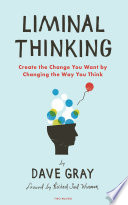

Liminal spaces are transitional zones where change is possible. The book emphasizes that these are not merely physical spaces but also mental and emotional states. By recognizing these liminal spaces, individuals can better navigate the complexities of change in their personal and professional lives. The author explains that liminality allows for new ideas and perspectives to emerge, which is crucial in a world that is constantly evolving. Embracing uncertainty and ambiguity is a key theme here, suggesting that instead of resisting change, one should lean into it to discover new opportunities.
Continue readingBeliefs shape our perceptions and actions. The book delves into how our beliefs can either hinder or facilitate progress. It encourages readers to examine their own belief systems critically. By understanding the origin of these beliefs, individuals can identify limiting beliefs that may be holding them back. The author provides strategies for reframing beliefs, which can lead to more constructive outcomes. This exploration of beliefs is essential for anyone looking to innovate or lead change, as it highlights the need for self-awareness in the process of transformation.
Continue readingQuestions are a powerful tool for fostering dialogue and exploration. The book emphasizes the importance of asking the right questions to stimulate critical thinking and creativity. Instead of seeking immediate answers, readers are encouraged to embrace inquiry as a means to explore possibilities. This approach can lead to deeper understanding and insight, which is crucial in navigating complex issues. The author provides examples of effective questioning techniques that can be applied in various contexts, making this an actionable concept for leaders and innovators alike.
Continue readingInnovation thrives in environments where experimentation is encouraged. The book discusses the significance of fostering a culture that embraces trial and error. By allowing room for failure, organizations can learn and adapt more effectively. The author shares case studies and examples of companies that have successfully implemented this mindset, illustrating the benefits of a flexible approach to problem-solving. This idea is particularly relevant for leaders who wish to cultivate an agile workforce capable of responding to change.
Continue readingConflict is an inevitable part of change. The book provides insights into managing resistance and conflict during transitional periods. It outlines strategies for engaging with dissenting voices and finding common ground. The author emphasizes the importance of empathy and active listening in these situations. By understanding differing perspectives, leaders can create a more inclusive environment that encourages collaboration rather than division. This idea is essential for anyone in a leadership position, as it equips them with the tools to handle challenging interpersonal dynamics.
Continue readingStorytelling is a powerful means of communication that can inspire and motivate. The book highlights how narratives shape our understanding of the world and influence our actions. By harnessing the art of storytelling, individuals can effectively convey their vision and engage others in their journey. The author provides techniques for crafting compelling stories that resonate with audiences, making this a valuable skill for leaders and entrepreneurs. This idea underscores the role of narrative in driving change and fostering connection.
Continue readingUncertainty is a natural part of life, especially in times of change. The book encourages readers to adopt a mindset that embraces uncertainty rather than fearing it. By doing so, individuals can become more resilient and adaptable in the face of challenges. The author offers practical strategies for managing anxiety related to uncertainty, such as mindfulness and reframing perspectives. This idea is particularly relevant in today's fast-paced world, where change is constant and adaptability is key to success.
Continue reading